The Ranch Getaway
How cattle work and long trails in south-central Colorado fortified our horses & me
Those of you who know me as a runner may not know my first sport and love are horses. This is a trip report about a week spent improving horsemanship, exploring a part of Colorado I’d never visited, and learning lessons in the saddle that apply to other aspects of life.
A week ago, I was trotting and galloping through sand and yellow-flowered sagebrush in the San Luis Valley of south-central Colorado, squinting my eyes to spot a cow with a hoof infection.
It’s not easy to find a specific reddish-brown cow in a herd of some 350 spread out on a sprawling expanse of this 100,000-acre ranch, but I kept trying, even though we’d been looking for this cow for over two hours.
My white quarter horse, Cobalt, showed no signs of fatigue. His ears pricked forward every time we approached cows, knowing he had a job to do. When he surged forward like a locomotive at an extended trot, my hands moved the reins high up his mane to urge him on while my seat lifted out of the saddle like a polo player. Some switch in his equine brain flipped to stampede mode, so he broke into a canter, which quickly progressed to a gallop. I sat back in the saddle and firmly pulled the right rein to flex his neck, which did the trick of slowing to a trot. I thanked him by loosening the reins and warned him, “Pace yourself.” He flicked one ear back to listen.
The massive dunes of the Great Sand Dunes National Park formed tan-colored lumps to the north against the backdrop of the darker Sangre de Cristo mountain range whose string of bald 14ers poked into the sky.
My husband Morgan, on our black horse Maverick, caught up to us, and we split off from the other riders to approach a cluster of reddish-brown cows lying down in the strong sun. We trotted up close and hollered at each one to stand up and move so we could see if any were limping. Nope, they were just a bunch of bored-looking healthy cows.
Suddenly we heard a commotion from the group several hundred yards away. I spun Cobalt around so I could watch Cam Schryver, a legendary horseman in his 70s with whom we were spending the week. He circled his rope overhead in a perfect large loop and trotted toward a reddish cow. Apparently, she was the one with the infected hoof, and now that she was being chased, she was running away as fast as she could.
Cobalt and Maverick sprung into action. The cow was speeding toward us, and we realized we needed to block her so Cam could ride close enough for roping. All the rollbacks we had practiced in the arena—the halting, backing, pivoting in a 180, then springing into a canter—instantly came into play. Morgan hollered, “You get that side!”
Cobalt and I swung left while he and Maverick went right. The cow wanted to thread the needle between us, but we wouldn’t let her. Cobalt and Maverick hustled back and forth in a face-off with the cow while Cam cantered up and tossed the rope.
The rope’s loop landed over the cow’s nubs of horns, but not over her neck. Cam growled, “Dang it!” and gathered the rope to try again while we continued to prevent the cow from getting past us. Our horses moved like players approaching the opposition on a field, engaged in an aggressive dance of lateral movements.
In those moments, communicating with Cobalt by using my legs, hands, seat, and voice, my horse and I moved as one, in complete harmony with single-minded purpose. Morgan and Maverick, the same.
Seconds later, Cam tossed the rope. This time, it landed around the cow’s neck, and the riders around us cheered. A second roper came up and tossed her rope to snag one of the cow’s hind legs.
Cobalt and I paused to catch our breaths and watch the riders back up their horses to tighten the ropes. Then they rode at an angle to force the cow to lie on her side. As soon as she went down and lay prone, a wrangler dismounted and pulled a large syringe out of her saddle bag. She put a knee on the cow’s neck for stability and injected the medicine. Then she and Cam loosened the ropes, and the cow got up and ambled away toward her herd. Mission accomplished.
Why did we take an eight-day vacation with our horses to spend the better part of each day engaged in manual labor and fast-paced rides? I pondered the practical and emotional reasons for it, especially as my body ached in unfamiliar ways. My sit bones felt bruised by midweek, and my inner-thigh muscles twinged from so much use.
I woke up early each morning for a short run to the corrals, where I fed the horses, and then I ran loops around the ranch to help my body reset and loosen up while greeting the sunrise.
One, I wanted to experience the San Luis Valley, a flat vast expanse carved by the Rio Grande in between the San Juan and Sangre de Cristo mountain ranges, with the towns of Salida to the north and Alamosa to the south. The area bursts with wildlife and birdlife thanks to the valley’s wetlands. Dog-sized jackrabbits jump through the brush, packs of coyotes prowl and howl, sloth-like porcupines lounge overhead in the branches of cottonwoods, and innumerable deer and elk roam freely through dense grasslands. On the northern half of the ranch, a heard of some 2000 bison thrive.
The ranch—part of which, hard to believe, operated as a golf course from 1989 - 2004—was bought by The Nature Conservancy, which restored the native grasslands and contracted with Duke Phillips and his company Ranchlands to manage the ranch’s bison and cattle herds. The Phillips turned the ranch’s historic buildings into a small guest lodge to host workshops in horsemanship, livestock management, writing and art, and more. (Info here.)
The Nature Conservancy saved the historic Medano-Zapata Ranch in part to show how cattle and bison operations can coexist with conservation efforts, and to study and promote sustainable ranching—a term some might believe is an oxymoron, but doesn’t have to be. As long as we continue to raise large animals for food, this is the best way to do it, in a way that promotes conservation and balance with the natural surroundings.
We also came here because we wanted our horses to develop their endurance, agility, and mental equanimity. Maverick and Cobalt rarely interact with other horses, because they live together at our home with no other horses around. We also rarely have time to ride them for longer than two hours. For them to spend the week with a herd, learning to navigate unfamiliar terrain while being ridden for hours each day—the equine equivalent of back-to-back long runs—would boost their skills and fitness the way a weeklong trail-running camp has helped me in the past.
Click through this Instagram post to see a Reel with some video footage:
Mostly, however, we wanted to ride under the guidance of Cam Schryver, a horseman with the ability to read a horse’s mind and mold its behavior through precise but nuanced cues. Cam directed the Thacher School’s horse program in Ojai, California, for two decades and taught both our kids to ride.
Some personal history: I grew up at the Thacher School because my grandfather and then dad worked there. The school’s founder believed in the saying, “There’s something about the outside of a horse that’s good for the inside of a boy,” so he developed a phenomenal horse program that has lasted for generations. All 9th graders are required to care for a horse and learn to ride. Both my husband and I attended Thacher and rode together there in the 1980s. Then our kids went there and rode all four of their high school years. Horses became a central and healthy part of their adolescence, and in 2016, both kids persuaded Morgan and me to get a family horse. Cobalt, then Maverick, came into our lives.
Cam is a superlative horseman. For proof, check out this video from 2013 when he won the Extreme Cowboy world championship competition at the ripe age of 64.
I started riding before my 4th birthday. Mounting a horse, and developing trust and respect with it, feels like second nature and brings me confidence and happiness as much (maybe even more?) than running. Working with horses grounds and calms me while developing body awareness and mindfulness similar to yoga.
I’ve done all types of English and Western riding. But I still have much to learn and improve, especially with dressage and ranch riding. Cobalt and Maverick have much to learn, too. So we became students of Cam’s all week, an experience that made me feel like a teenager at our high school again.
Lessons learned in the saddle usually apply to other aspects of life, especially in terms of personal growth, parenting, and relating to others. Among the things I learned or was reminded from Cam and from our horses:
Practice empathy. Understanding the horse’s point of view, their herd mentality, and their flight response—the fact “they’re trying to do what makes them feel comfortable and safe,” as Cam put it—helps to work with, not against, them. Similarly, respect the fact that moods and energy levels change day to day in horses as well as in people. “Sometimes they wake up on the wrong side of the corral,” Cam said. “You’ve gotta ride the horse you have,” according to how they feel on a given day.
Embrace variety and new challenges. There are different styles of riding, just like different types of running. Practicing a variety develops different skills and strengths. Typically, I aim to ride in a Western dressage style in an arena, which means riding with a deeper seat, maintaining soft contact with the horse’s mouth, and working on balanced, collected, fluid motion. At the ranch, however, I mainly rode with a loose rein and practiced movements used in gymkhana and reining, which meant zigzagging and pivoting as much as smooth bending. It felt like a fun change!
Make the right thing easy and the wrong thing hard. Horses don’t operate on rewards alone. They choose the easier option. For example, Maverick was doing a nervous dance while separated from his buddy Cobalt. Cam watched me unsuccessfully try to force Maverick to stand still while Maverick pulled on the bit, tossed his head, and backed up. Instead of fighting his desire for movement, Cam said, work with him by turning him in small circles, frequently changing direction. Soon he’ll grow tired, and the right thing—standing still—will feel to him like the easier option. It worked.
Avoid mixed signals. “You can’t say whoa and go at the same time,” admonished Cam when he watched a rider use her legs to ask for canter while accidentally yanking on the reins.
We call Cobalt and Maverick “the boys,” as if they’re children, and to a large degree they do fill our empty nest and my maternal yearnings. Caring for them, and learning with them, has become a huge, healthy part of my life. They give me purpose and comfort and make me more than just a runner.
Culturally, the horses connect me to my past—to a century ago when my grandfather ranched and drove cattle for days from Utah to southwest Colorado, before the Depression wiped out his family ranch, and he moved with my grandmother and then-toddler father to Southern California to start a new life as a writer and teacher. They relate to my childhood, when I started every school morning feeding flakes of hay and filling a wheelbarrow with manure before catching the school bus. And to my adolescence, when my responsibility to my horse kept me from completely going down what my counselor called “a path of self-destruction.” I practiced equine therapy intuitively before it became a thing.
I’m proud of how “the boys” adapted and developed last week as endurance athletes in the ranch setting. They worked so hard, saw so many new things, learned so much. As did we.
Related posts:
Our Pandemic Silver Lining (Maverick’s origin story)



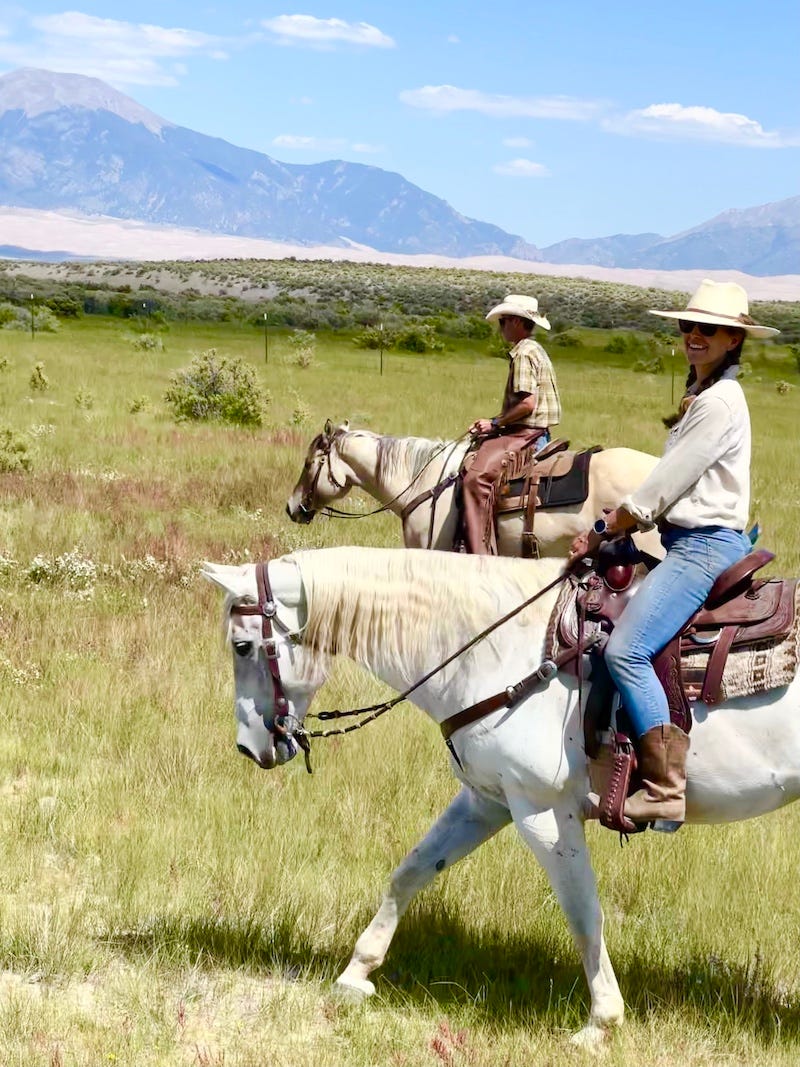
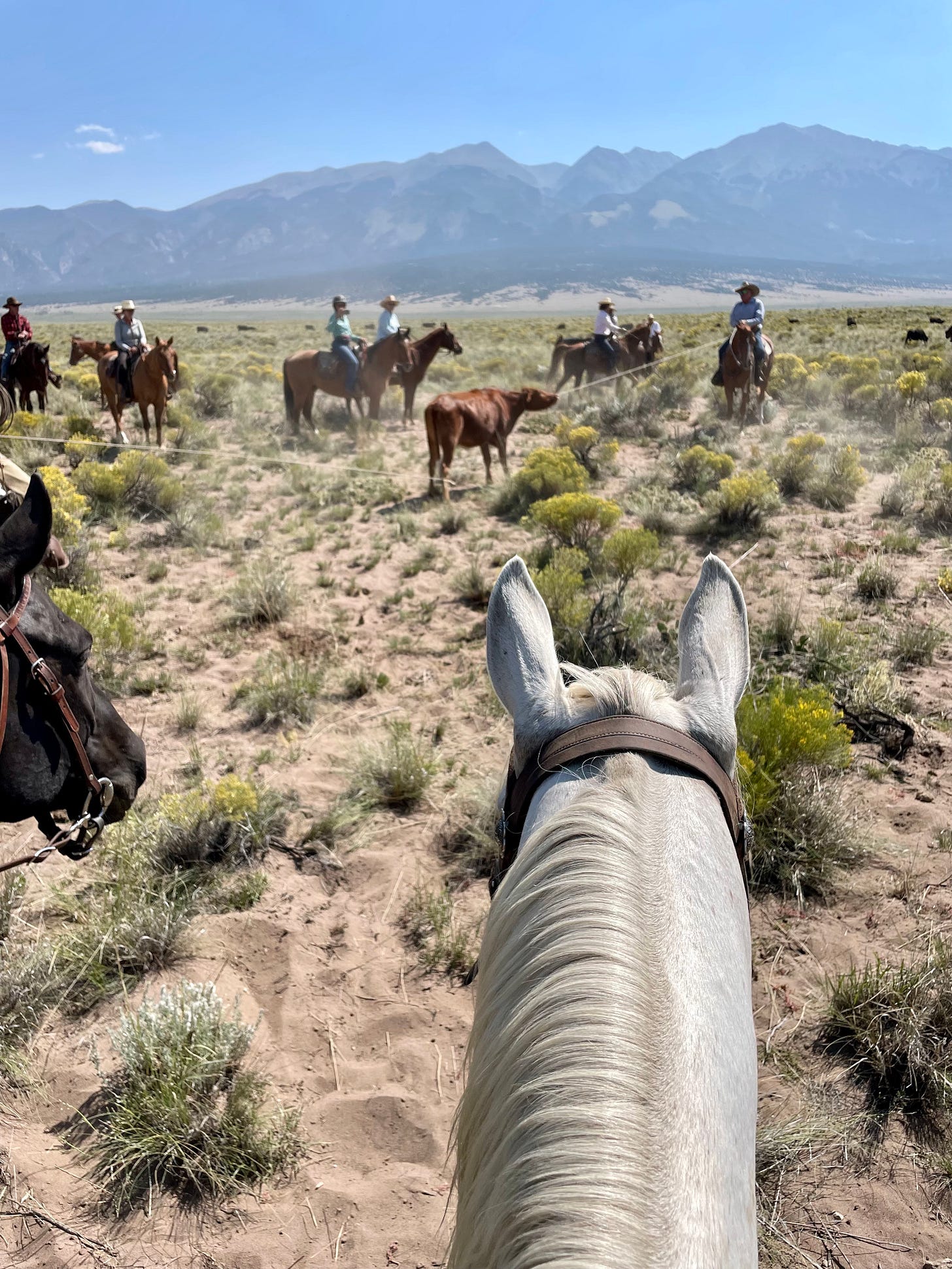

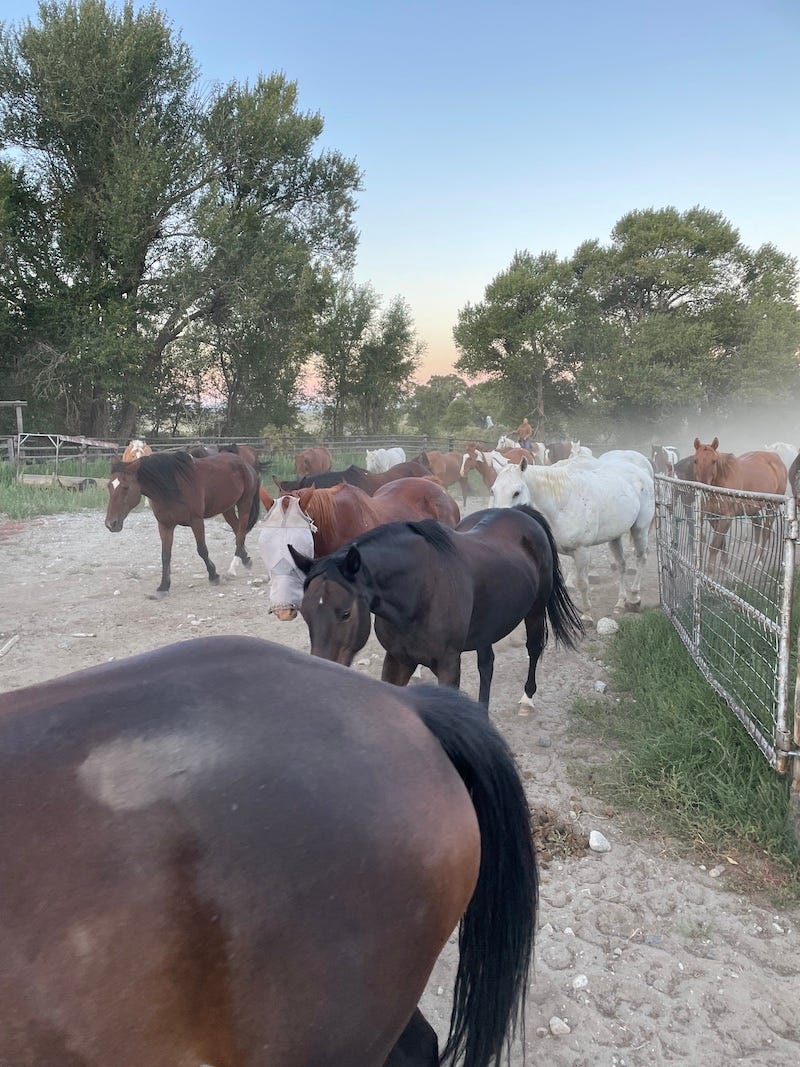
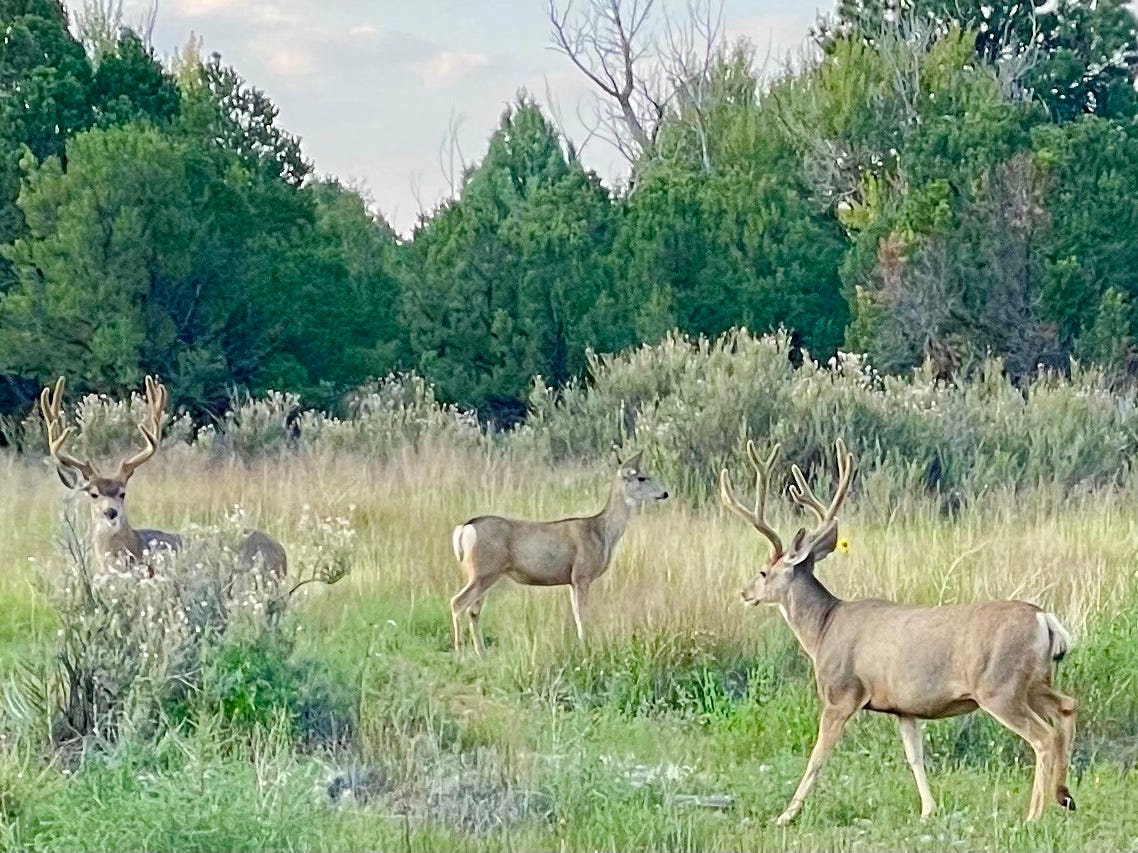
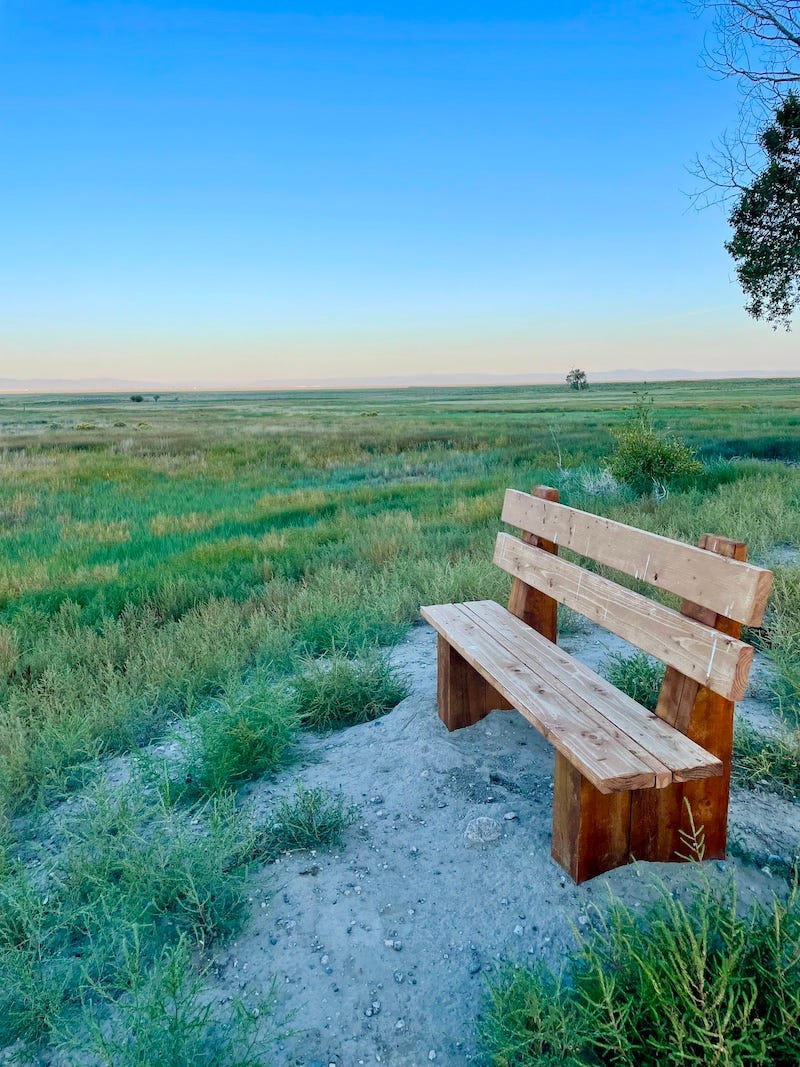
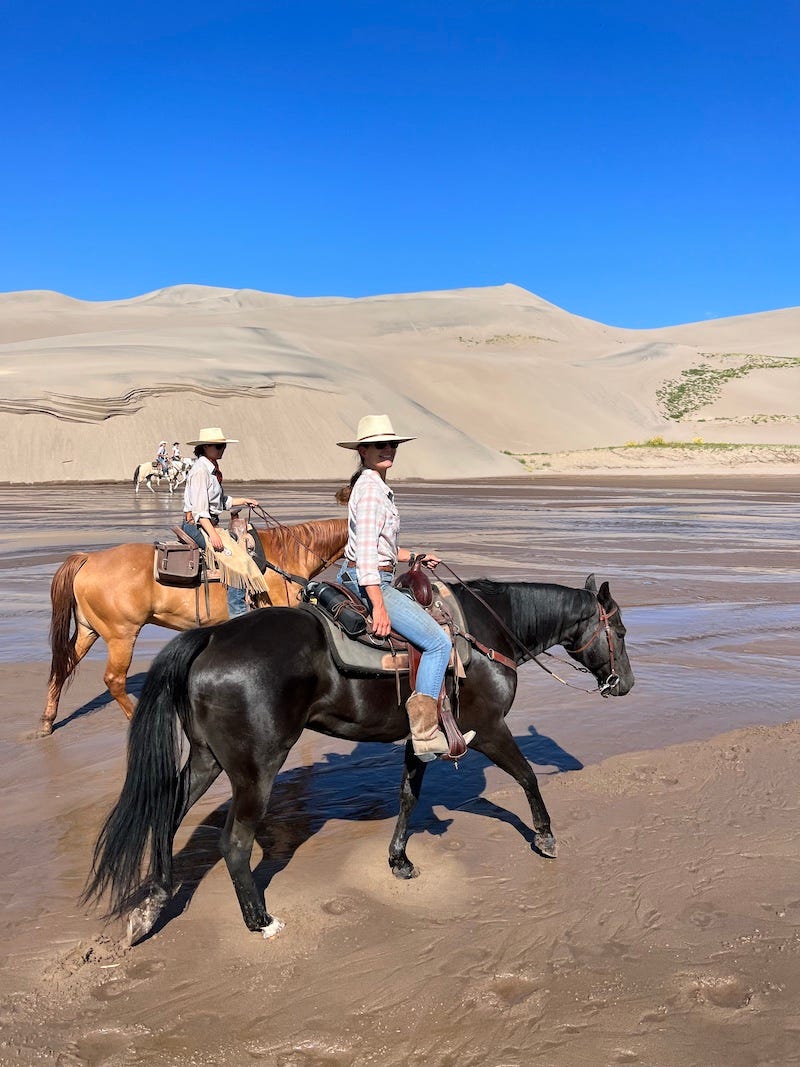


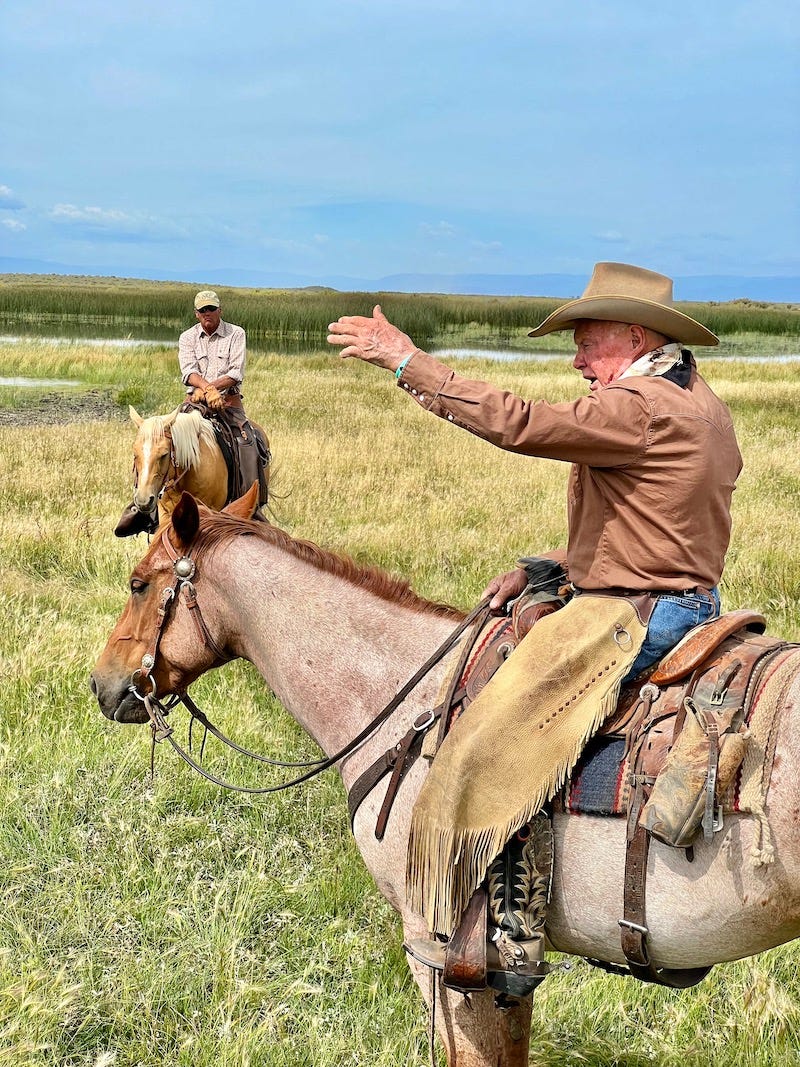
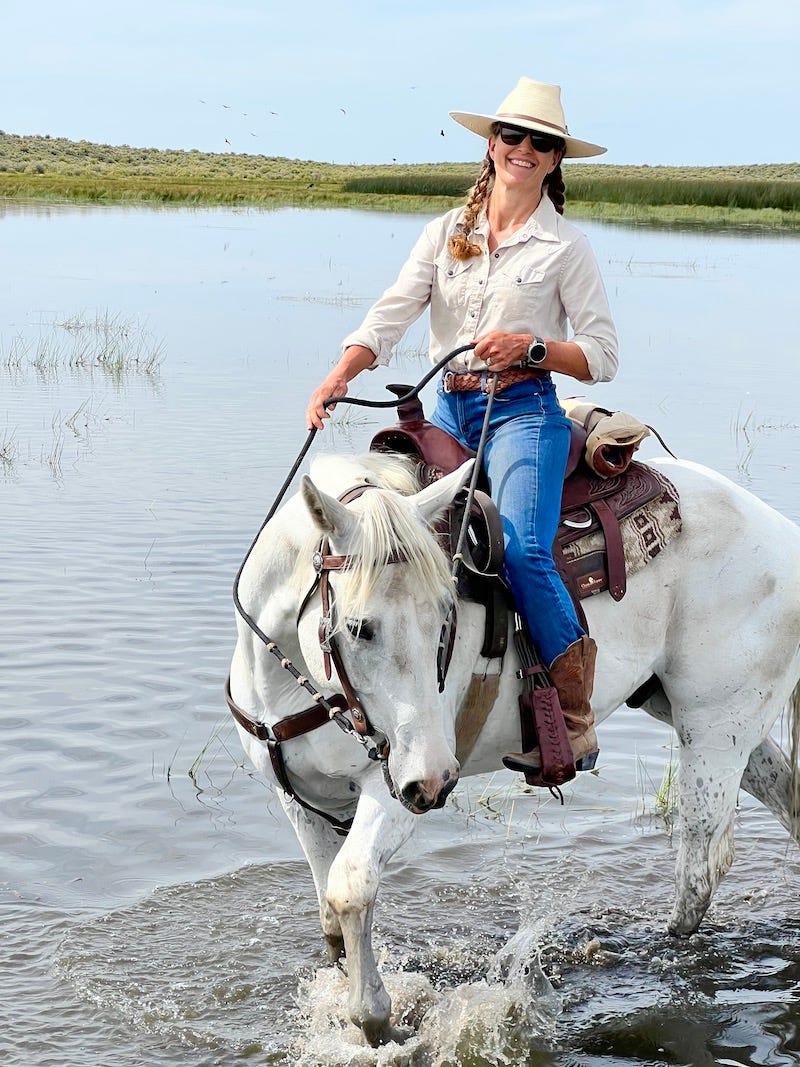
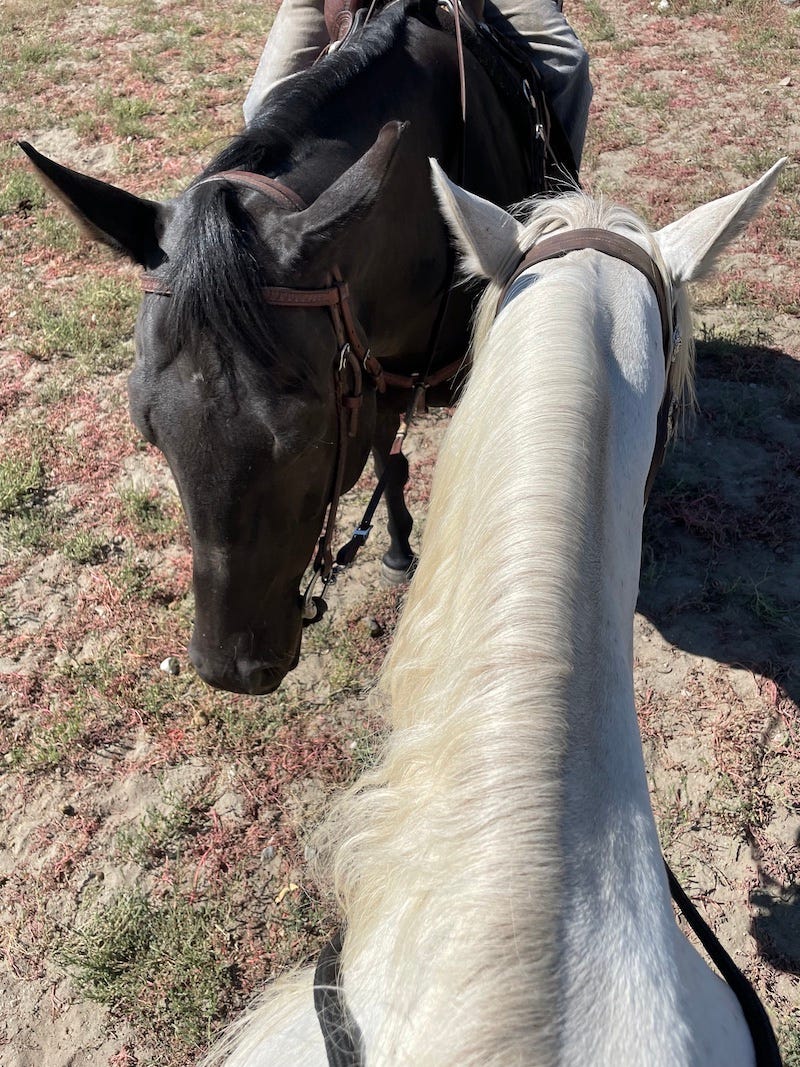
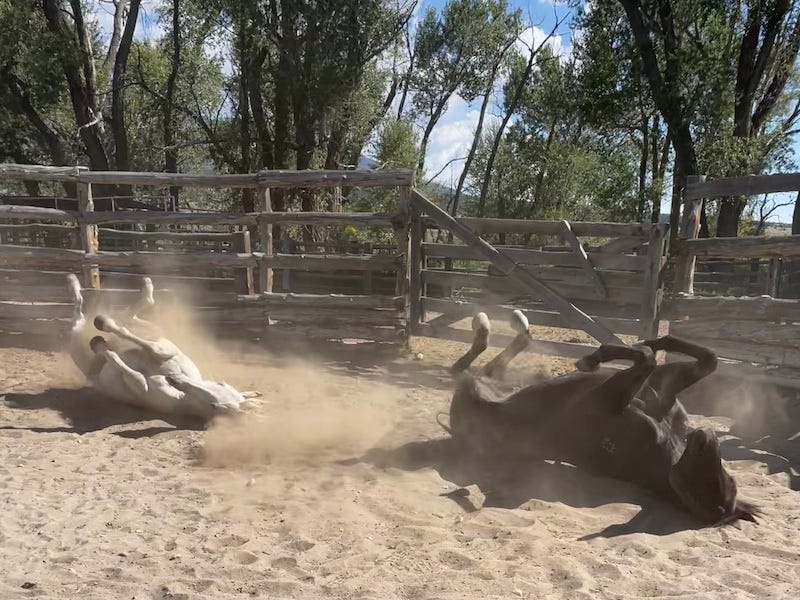
Wow, this gives me a lot of peace. I am in Colorado right now visiting a friend and am so easily in love with the abundance of nature here. What a great place to live.
Terrific post! Really enjoyed this one. Can't wait to hear more about the 'camp' as soon as we can get together. So fun that we were out at the Great Sand Dunes just a day before you were. Loved the pics and the idea of not just you and Morgan, but the 'boys' as well, seamlessly blending self-improvement with genuine fun.,